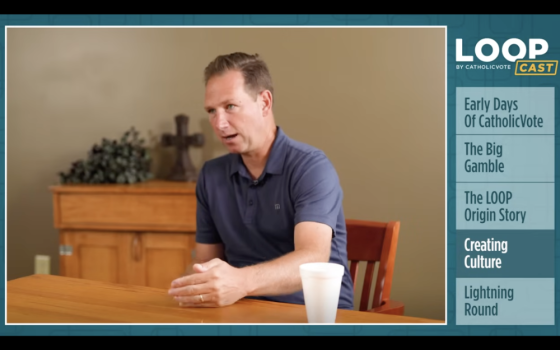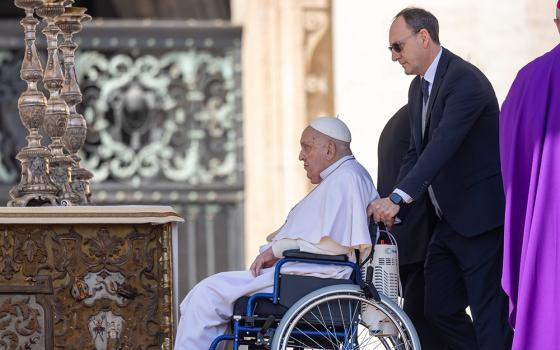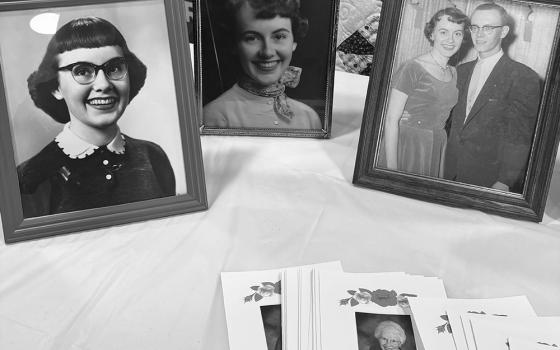We should sit with the suffering and the abandonment of the cross, with the rejection of all that Jesus taught which that cross implies. We should sit with death, with such a death.
"But we proclaim Christ crucified, a stumbling block to Jews and foolishness to Gentiles" (1 Corinthians 1:23).
We repeat St. Paul's statement of faith at every Mass when, in the memorial acclamation, we sing: "We proclaim your death, O Lord …" Indeed, the Mass is itself a recreation of the paschal mystery, of which the crucifixion remains the most difficult aspect to comprehend. We moderns get frustrated when we cannot solve a problem, when progress fails to deliver on its promises, when the cultural and social sky darkens and sin seems to have the upper hand.
How, then, to wrap our heads and our hearts around the image of a crucified God? Is the crucifixion still a stumbling block for us, some mythic foolishness of an earlier age, a thing to be turned into a nonthreatening metaphor?
We should sit with the suffering and the abandonment of the cross, with the rejection of all that Jesus taught which that cross implies. We should sit with death, with such a death.
In the Middle Ages, the people of God did not share our difficulty. There are countless crucifixes and paintings from that era which capture the brutality and bloodiness of the crucifixion. Before modern medicine, physical suffering was something to be endured, not cured. Women often died in childbirth. Incurable diseases remained incurable. The punishment meted out to criminals was brutal. Identifying with the suffering of Jesus on the Cross did not require as much imagination for them as it does for us moderns.
It is entirely proper to identify our sufferings with those of Jesus. In the Catholic Standard, the newspaper for the Archdiocese of Washington, Bishop Evelio Menjivar wrote a powerful column identifying the sufferings of the migrant community today with the sufferings of Christ. Apart from all the other points of commonality, the injustice of the verdict against Jesus and of the policies directed at migrants is especially poignant.
The suffering of Jesus, however, is different from all other instances of human suffering. "Jesus found himself left alone, not only by his people, but by the one to whom he had constantly appealed as no one did before him," wrote Hans Küng in his book On Being a Christian. "Left absolutely alone … God's witness was left in the lurch by the God to whom he had witnessed. The mockery at the foot of the cross, reported in a variety of ways, underlines vividly this wordless, helpless, miracle-less and even God-less death. The unique communion with God which he had seemed to enjoy only makes his forsakenness more unique."
We know in faith that Good Friday is not the end of the story. We know that in reaching out his hands to be nailed to the tree, Jesus was reaching out forevermore between earth and heaven, between death and life, between sin and grace. But we should not rush too quickly to the happy ending that impends on Easter morning. We should sit with the suffering and the abandonment of the cross, with the rejection of all that Jesus taught which that cross implies. We should sit with death, with such a death.
Advertisement
Our modern minds rush to solutions, not salvation. We have domesticated sin by making it social and psychological, and almost always locating it in someone else's story. Indeed, we have domesticated Jesus, attributing to him those characteristics we most like in ourselves. In our time, Jesus is cosmopolitan and even urbane, exceedingly nonjudgmental, although if he does judge others, he is likely to condemn those we condemn. He looks a lot like we like to see ourselves.
Good Friday invites us to rid ourselves of such modern blinders. No person, modern or ancient, would have conceived of the cross as the very form of the beautiful, which it has become for us Christians. We should be less eager to domesticate something which is, at first glance, outrageous. We should not be so keen to explain the inexplicable.
Good Friday reminds us of the dreadful cost paid for our salvation. It reminds us that Jesus did not only confront injustice and sin but death itself, and he did all this on our behalf. Before this paschal mystery, we tremble, tremble, tremble.
Jesus' Calvary does not free us from injustice, or from sin, or from death. But it does free us from that forsakenness which he endured. If we cling to his cross, we are not forsaken as we carry our crosses. We are not alone when Sister Death comes for us. We know that Jesus Christ is with us, Christ, the one whom we crucified.






